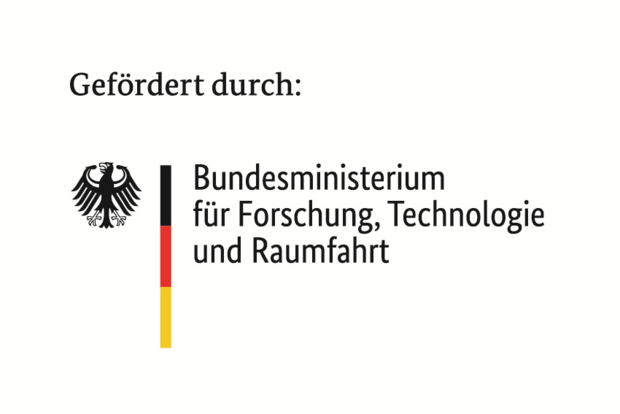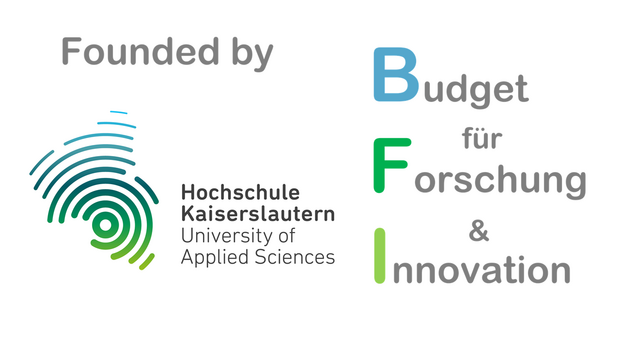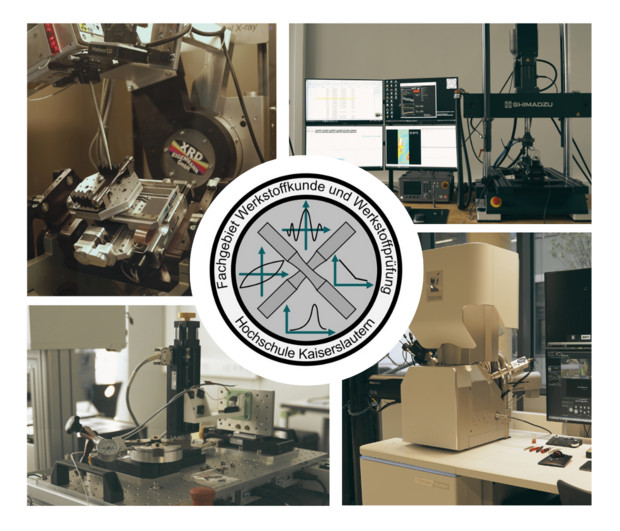Current Research Priorities
- Characterization of fatigue behavior and fatigue life calculation using StressLife, StrainLife and SteBLife
- Development and application of NDT-based measurement methods for the characterization of damage evolution on specimens and components
- X-ray determination of residual stresses on complex components
- Characterization of the mechanical material behavior of metallic material samples on the microscale

Research projects funded by the German Research Foundation (DFG)
In order to be able to use the pre-damaged components again in new machines and systems after reconditioning, a quantitative evaluation is required, which makes it possible to distinguish between surface and volume damage.Within the scope of the project, the quenched and tempered steel 42CrMo4 is pre-damaged in the HCF range, the damaged volume is removed and, after reconditioning, subjected to a secondary loading in the VHCF range in order to determine the reuse potential. During the tests, the material reaction is characterized in-situ by means of resistometry, thermometry and magnetic field measurement, and subsequently by scanning electron microscopy, which can be used to predict service life.
DFG STA 1133/20-1, Cooperation project with the IEHK, RWTH Aachen University
Since 2023, the University of Applied Sciences Kaiserslautern has had access to a scanning electron microscope with comprehensive analytical equipment funded by the German Research Foundation (DFG). In addition to high-resolution imaging, the system enables advanced analyses using energy dispersive X-ray spectroscopy (EDX), electron backscatter diffraction (EBSD), and scanning transmission electron microscopy (STEM). This opens up a wide range of applications in various disciplines at the university. In materials engineering and mechanical engineering, the SEM is used for the detailed characterization of microstructures, alloys, and damage mechanisms. In addition, the image and analysis data obtained can be used for modeling, simulations, and the development of data-driven, AI-supported evaluation methods.
The SEM represents a central research infrastructure that promotes interdisciplinary collaboration within the university and strengthens visibility and networking in national and international research contexts.
DFG INST 252/27-1
The aim of the proposed research project is to develop a fatigue life prediction method (LPV) that enables the most accurate prognosis possible with regard to cyclic deformation behaviour and (residual) fatigue life despite a reduced specimen effort. An essential aspect is the application of parametric and non-parametric mathematical models, which enable a statistical validation of the results obtained. As a first step towards the provision of component fatigue curves using LPV, a further aim is to also improve the measurement techniques and methods for notched specimens in order to detect processes occurring in the notch base during the fatigue process and to provide input variables for the newly developed LPV.
DFG STA 1133/28-1
Understanding the microstructure evolution under quasi-static and cyclic loading of metallic materials is a central issue when it comes to coupling the mechanisms taking place in the material with the signal changes recorded using various measurement techniques. On the one hand, this provides a more fundamental understanding of the development of damage and, on the other hand, this information can be used as input variables in microstructure simulation models, which ideally allows a generally valid understanding of the development of damage to be established that can be transferred to other materials. The basic idea of this project is to link the changes in measured variable signals with material mechanisms and to develop a comprehensive understanding of them.
In particular, a scanning electron microscope (SEM; INST 252/27-1) procured through the HAW large-scale equipment programme will be used to record microstructural changes in the model material copper in interrupted tensile and fatigue tests and to make these usable for simulation approaches. In this approach, the results from tests with a tensile-compression module in the SEM are to be supplemented, which is expected to provide a profound understanding of the material mechanisms involved.
DFG STA 1133/26-1
Within the scope of this research project, the application potential of various measurement methods (thermometry: IR camera, thermistors, thermocouples; resistometry: direct current measurement) during high-frequency fatigue tests on a resonance pulsator (MIKROTRON, Russenberger, INST 252/21-1) is to be tested and validated using the example of the quenched and tempered steel 42CrMo4. In addition to the general applicability, the aim is to quantify which measurement technique can detect the fatigue processes taking place with the best possible resolution and selectivity. In order to be able to consider the widest possible range of influencing factors in the project, a total of three important influencing parameters are systematically considered in the investigations. In addition to the influence of frequency, which will be demonstrated at three frequencies, the influence of specimen size and the influence of notches will also be considered. Due to the planned investigations on different specimen geometries, a possible heating of the specimen and thus a superimposition with the service life extension due to an increased measuring frequency is considered. In particular, the differentiation between notched and unnotched specimens is of great technical importance. The application of non-destructive exam methods to notched specimens enables the data obtained to be transferred to new fatigue life prediction methods and thus represents an important step towards accelerated determination of component Wöhler curves.
DFG STA 1133/25-1

Projects funded by the German Federal Ministry for the Environment, Climate Action, Nature Conservation and Nuclear Safety (BMUKN)
The overall objective of the joint research project is the identification and qualification of micromagnetic measurands for a multi-parameter approach that is suitable for making a defined statement on the microstructural degradation of fatigued metallic nuclear power plant components. The project is intended to make a decisive contribution to the further development of methods for fatigue life prediction for nuclear components through the microstructural interpretation of micromagnetic measurands.
BMUV, Project Management Organisation GRS, cooperation project with WPT, TU Dortmund, GRS Cologne

Research projects funded by the Federal Ministry of Research, Technology and Space (BMFTR)
The limited availability of rare earth metals has increased the pressure to search for alternative, rare earth-free magnetic materials as well as for process-technological possibilities to induce the necessary magnetic anisotropy. Electrochemical deposition with an external current source ("electroplating") from aqueous solutions is to be used as the manufacturing process for the materials and components. This is a scalable, integrable and, in principle, simple, i.e. also cost-effective process, which, in conjunction with known and industrially used structuring processes such as lithography, permits arbitrary 2.5D geometries even with relatively thick layer heights. This results in nanocrystalline materials that have specific magnetic properties depending on their composition and material structure. By specifically influencing the nanoscale grains and nanostructuring (nanowires), the materials are to be adjusted to specific applications with regard to their magnetic properties in conjunction with the microstructuring of the components.
BMFTR 13FH099KX0, Cooperation with Prof. Monika Saumer and Prof. Sven Urschel

Research projects supported by the Budget for Research and Innovation (BFI) of Kaiserslautern University of Applied Sciences
As part of the research project, a corrosion measuring station will be set up and integrated into a fatigue testing system (fatigue testing system) so that electrochemical investigations can be carried out. By exposing the materials to various non-corrosive and corrosive media (e.g. distilled water, acids, etc.), the medium-material interface reaction can be recorded in the form of the corrosion potential and current. In further investigations, impedance measurements are also to be carried out as an additional source of information for the investigation of the processes at the interface. In the project phase applied for, the aspect of non-corrosive media on austenitic materials (X6CrNiTi1810) is to be considered first.
BFI University of Applied Sciences Kaiserslautern, Cooperation mit Prof. Monika Saumer
The aim of the project is to transfer the methods and findings of Kerr microscopy from the model materials considered to date to ferritic-pearlitic and high-alloy austenitic steels, which are characterised by a multiphase structure. The aim is to gain new insights which, on the one hand, have not yet been adequately described in the literature and, on the other hand, provide a completely new understanding of the mechanisms taking place in the material.
BFI University of Applied Sciences Kaiserslautern
The project aims to develop a novel magnetic imaging technology called Vibrating Magnetic Tip Imaging (VMTI). This method promises a significant improvement in spatial resolution and differentiation of material properties such as electrical conductivity and magnetic permeability compared to conventional eddy current testing and magnetic force microscopy.
BFI University of Applied Sciences Kaiserslautern
This project investigates how manufacturing parameters such as surface roughness, residual stresses and microstructural changes affect the cyclic deformation behaviour of metallic materials. Using energy-based evaluation concepts and non-destructive testing methods, the project aims to enable accelerated and individualised lifetime prediction, thereby reducing time and resource requirements in material development.
BFI University of Applied Sciences Kaiserslautern
Approved research large-scale equipment
- High frequency pulsator
INST 252/21-1 FUGG - Scanning electron microscope with EDX, EBSD and STEM
INST 252/27-1 - Metal 3D Printer
INST 252/23-1 LAGG
Completed Research Projects
DFG STA 1133/6-1
BMWi, Project Management Organisation GRS, Co-operation project with WPT, ZU Dortmund, LZFPQ, Saarland University, MPA University Stuttgart, GRS Cologne
DFG STA 1133/10-1
- Evaluation of fracture surfaces with respect to damage development of cyclically stressed specimens made of C22E and 20MnCrS5
- Evaluation of the frequency influence on the fatigue behavior of unalloyed steels
BFI Hochschule Kaiserslautern
BMUV 1501610D, Project Management Organisation GRS, cooperation project with WPT, TU Dortmund, LZFPQ, Saarland University, MPA Stuttgart University, GRS Cologne
Carl-Zeiss Foundation, cooperation with various professors at Kaiserslautern University of Applied Sciences, headed by Prof. Monika Saumer
BMUV 1501623, Project Management Organisation GRS
DFG STA 1133/22-1, Cooperation project with the WPT, TU Dortmund University
Availability of data
Are you interested in data from publicly funded research projects?
Please contact us and we will provide you with access to relevant data.

Vizepräsident für Forschung und Transfer, Studiengangsleitung "Maschinenbau, Bachelor", Fachbereichsrat AING
- +49 631 3724-2389peter.starke(at)hs-kl(dot)de
- Campus Kaiserslautern
- Room H1-2010.1
